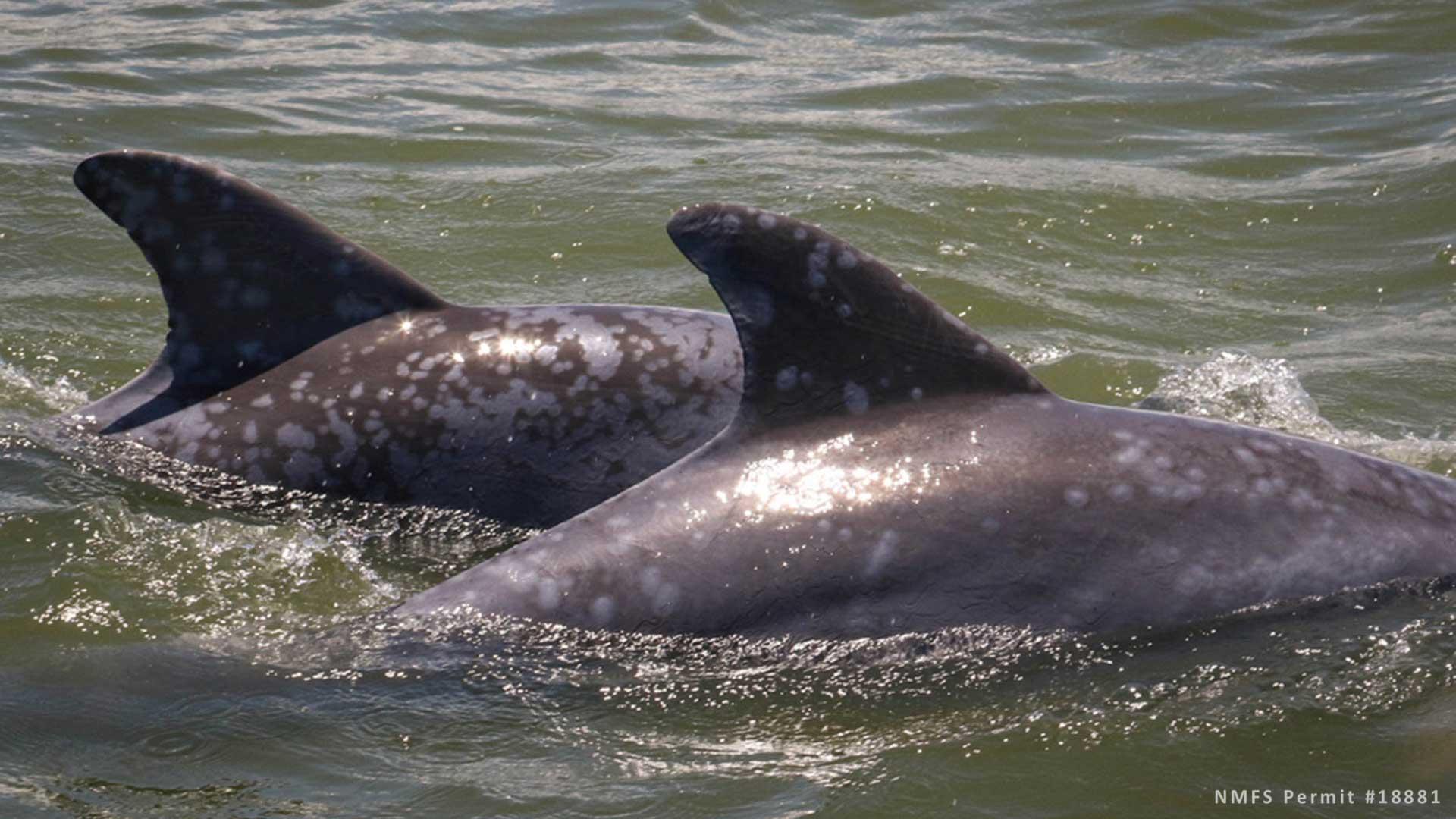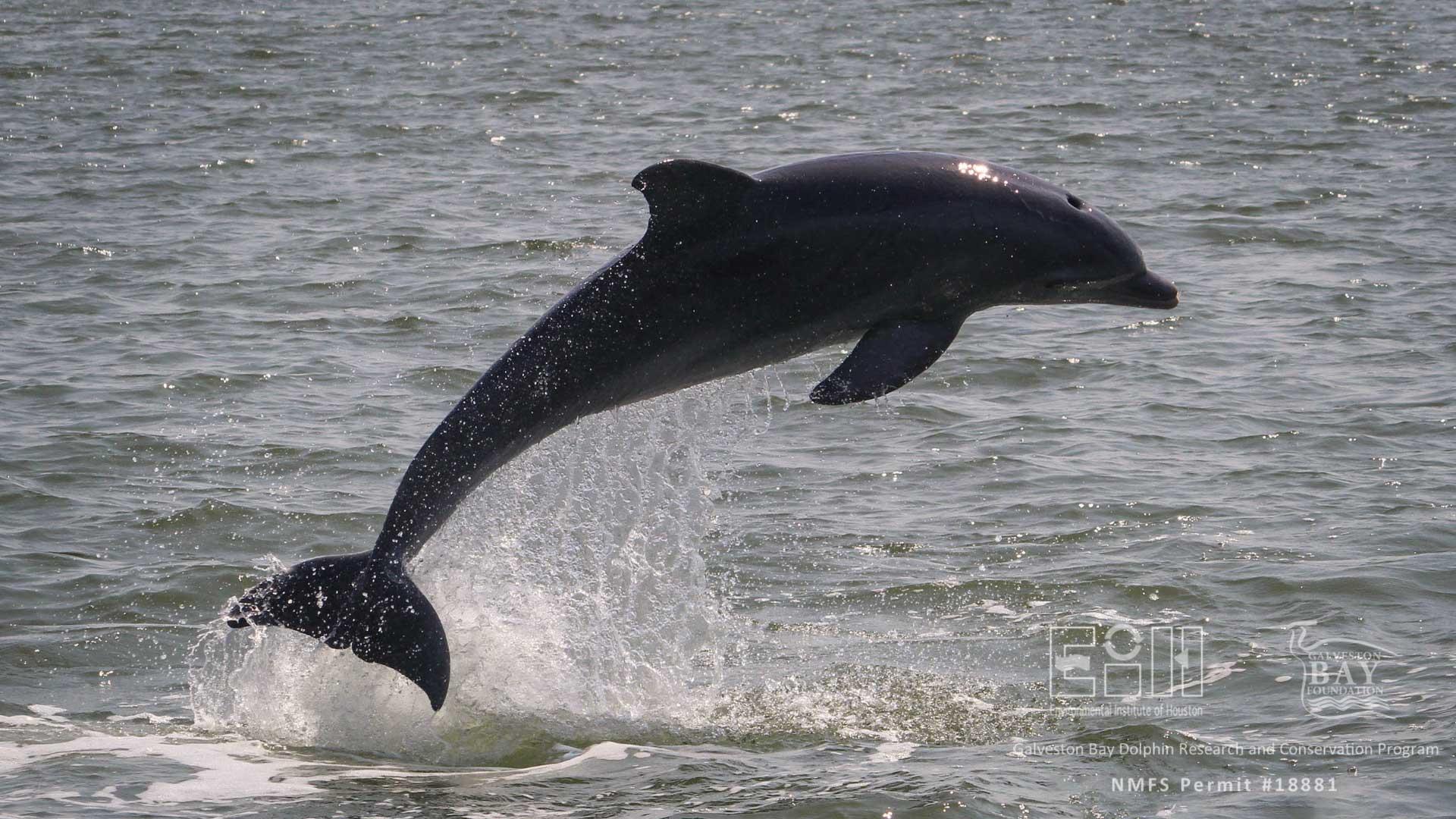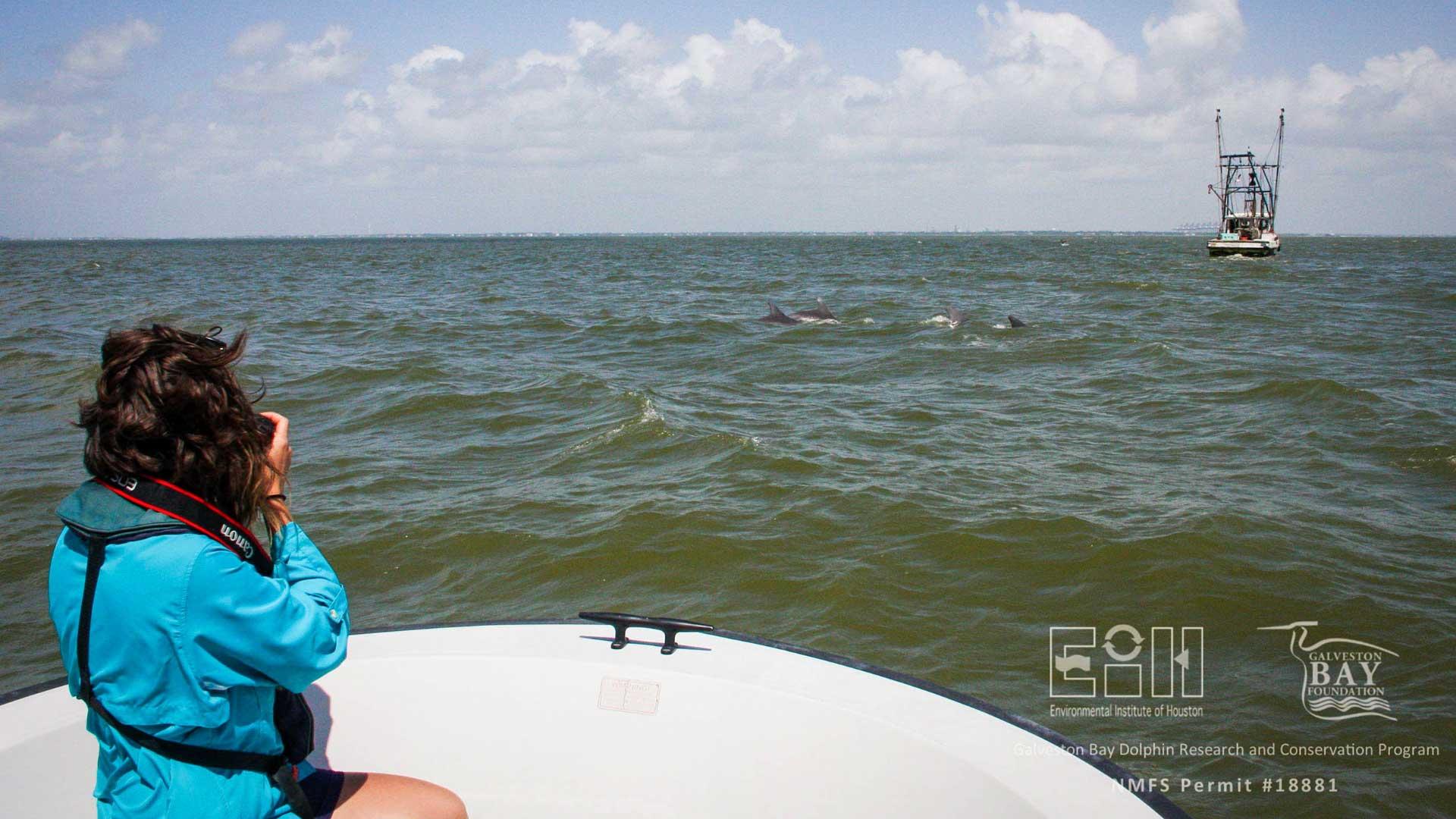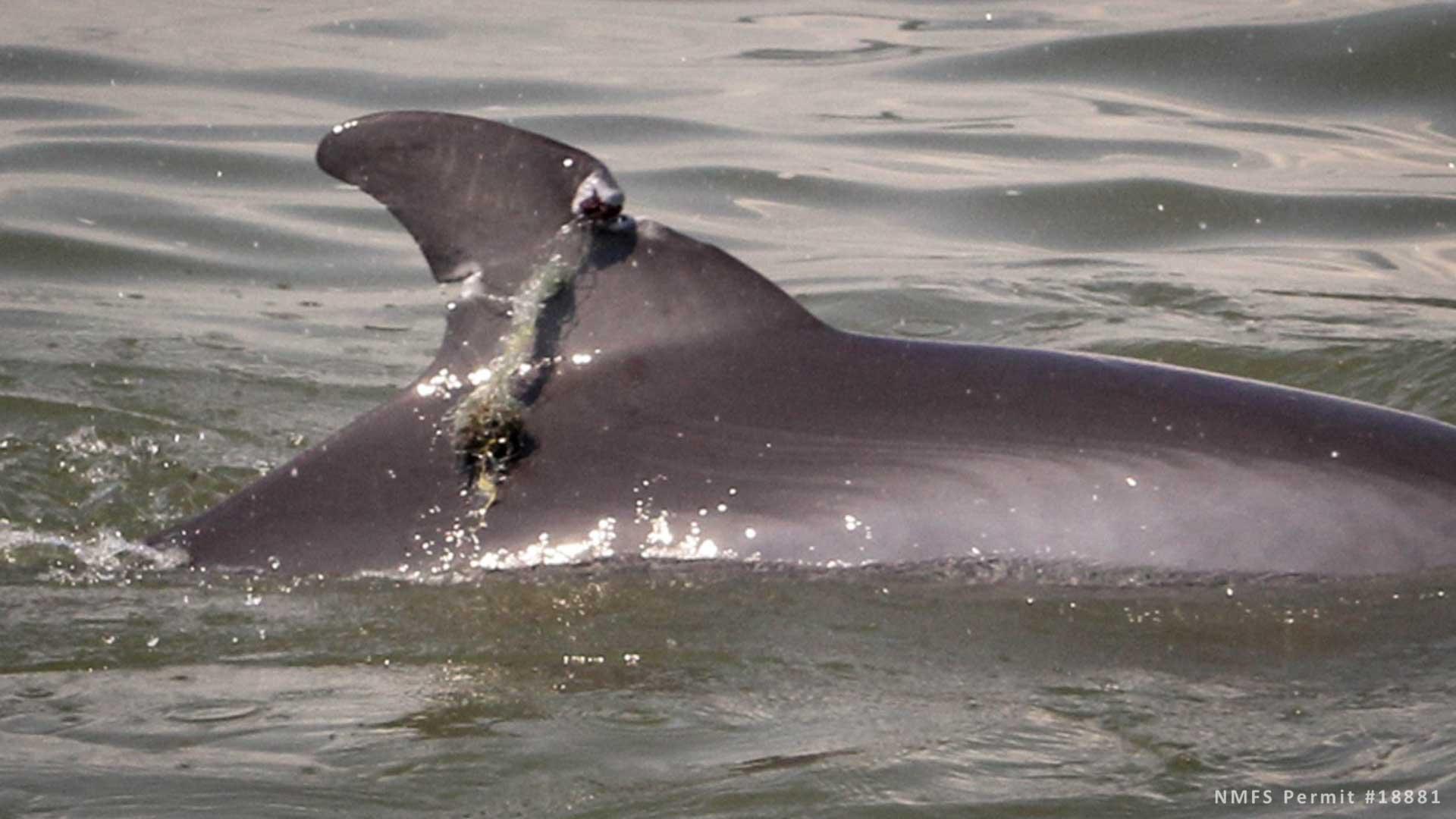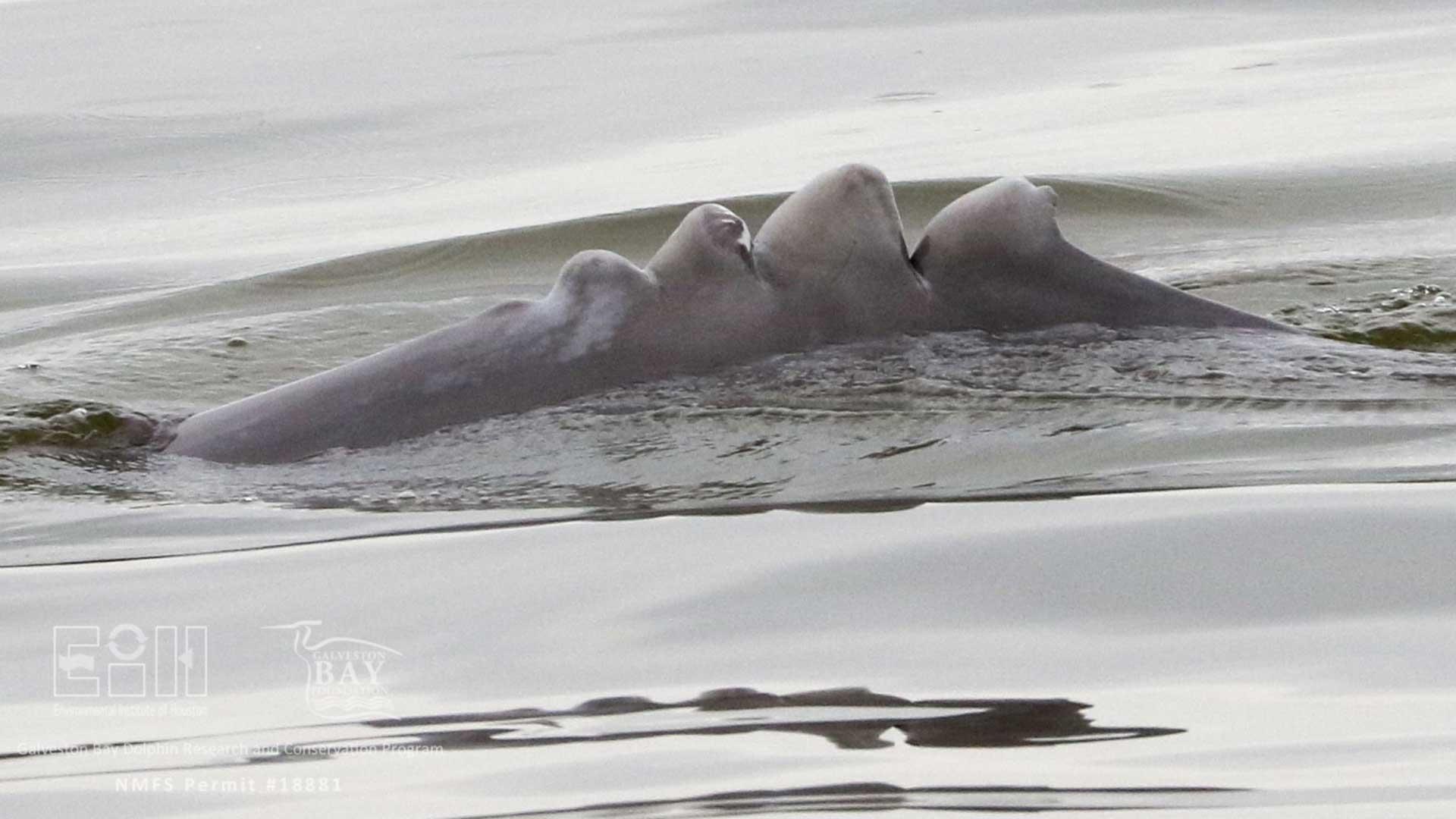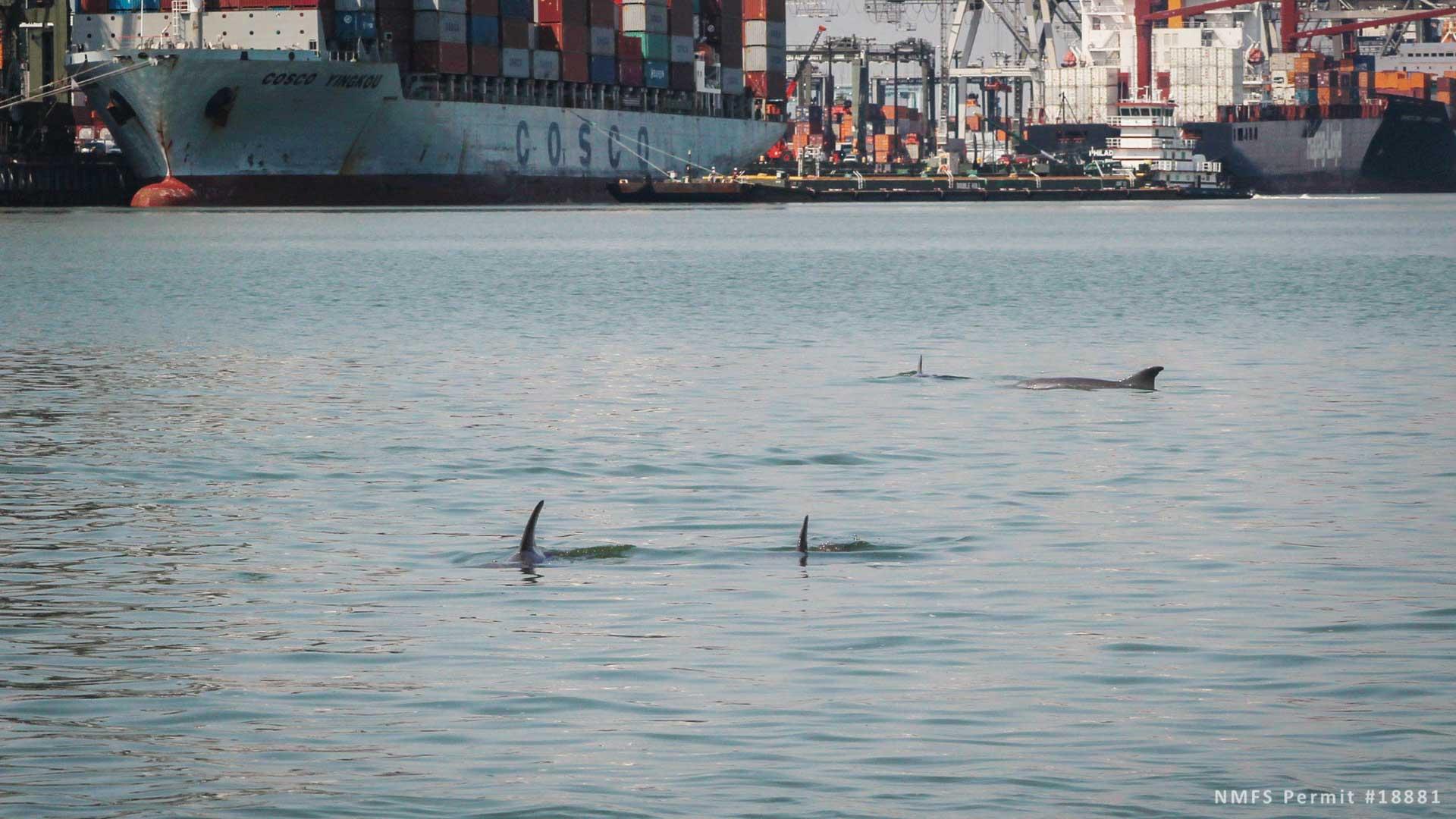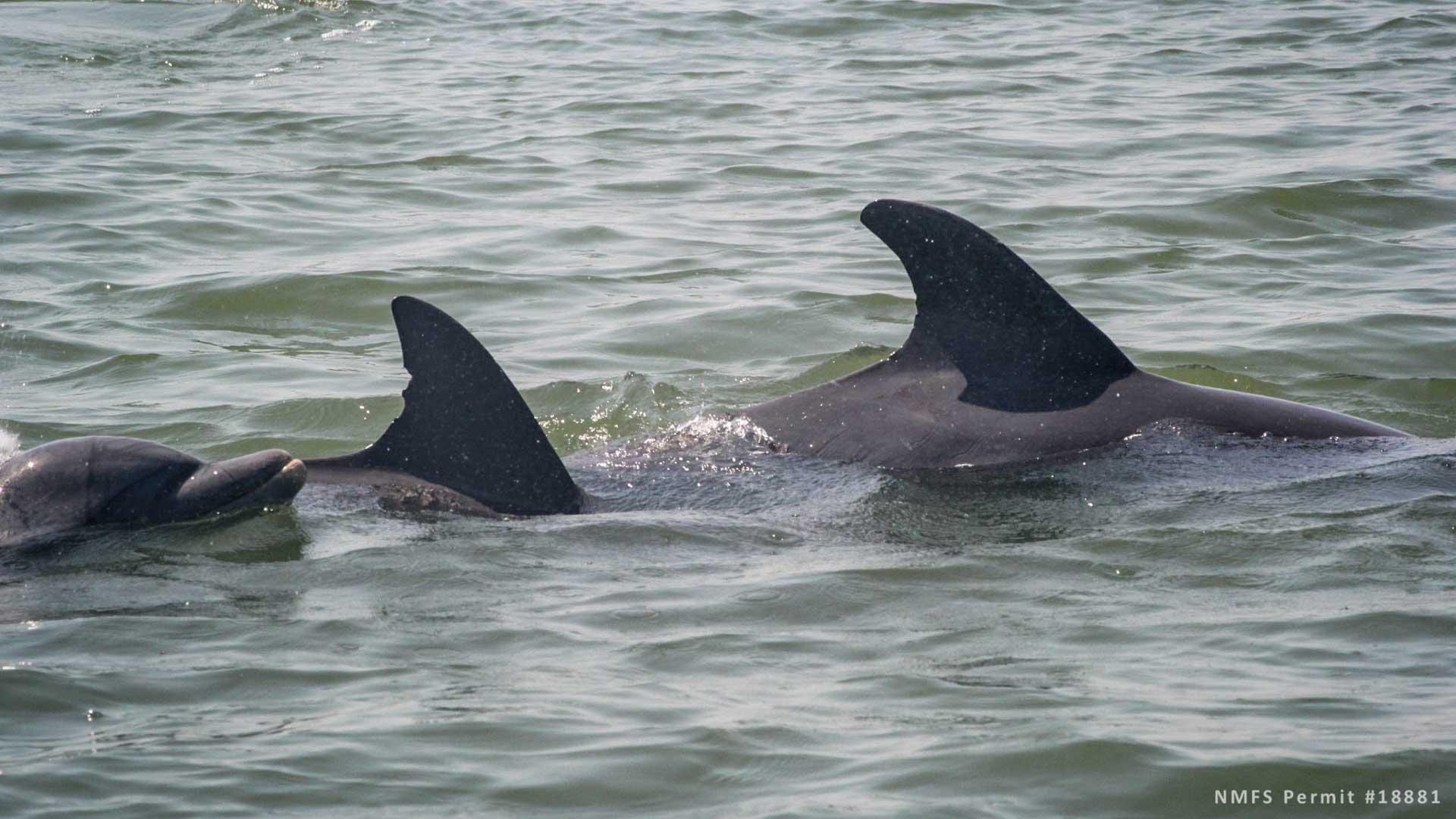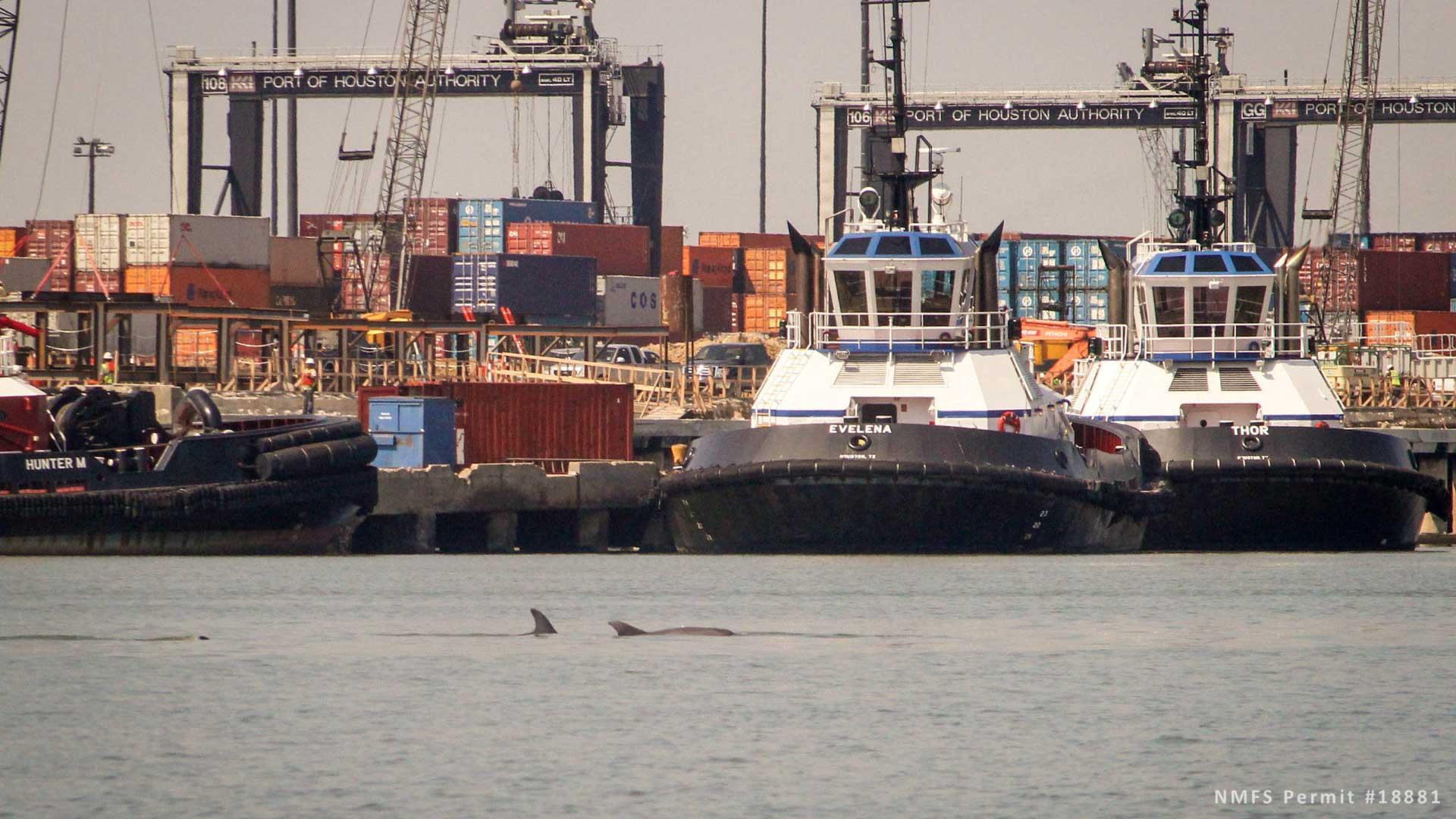
Galveston Bay Dolphin Research Program
EIH has partnered with the Galveston Bay Foundation to form the Galveston Bay Dolphin Research Program (GDRP). We are excited to work together combining research and public awareness efforts to improve conservation for dolphins in Galveston Bay.
Purpose/Objectives
The objectives of this project are 1) to implement a monitoring program for bottlenose dolphins (Tursiops truncatus) in Galveston Bay, Texas, 2) to determine relative abundance within the upper Galveston Bay Estuary and Houston Ship Channel, and 3) to characterize residency patterns, habitat use and ranging patterns of these dolphins.
The primary objectives of the GDRP are to:
- Implement a long-term monitoring program for the bottlenose dolphins in Galveston Bay.
- Conduct research on the ecology and behavior of Galveston Bay dolphins, with a particular focus on the upper Galveston Bay dolphin population.
- Study human-dolphin interactions in Galveston Bay and their impacts on both dolphins and people.
- Raise awareness about Galveston Bay dolphins and their habitats in Galveston Bay communities.
Study Area
Galveston Bay, Texas
Project Period
August 2013 – present
Description
The life history of bottlenose dolphins (Tursiops truncatus) in our coastal waters makes them an ideal species to act as sentinels of ecosystem health and sustainability. Many dolphins are residents in our bays, sounds, and estuaries, living long lives and feeding at a high trophic level on local prey sources. In this location, they are exposed to environmental conditions and stressors created by anthropogenic influences on their habitat. Their health and survivability in these conditions can provide a wealth of information about the ecosystem we share with them.
High levels of urban and industrial development throughout the Galveston estuary watershed reduces water flow, increases nutrient loading and contaminant run-off, causes habitat degradation and places overharvesting stress on natural resources. Evidence suggests that dolphins residing within industrial coastal regions carry increased toxin loads and are subject to adverse effects on reproduction, endocrine function and immune function. These dolphins are prime bioindicators for the effects of emerging disease and impacts of eutrophication, harmful algal blooms and xenobiotic contamination.
Galveston Bay hosts commercial and recreational fisheries, accommodates boat traffic supporting the second-largest petro-chemical compound in the world, receives runoff from over half of Texas’ population, and is subjected to regular dredging operations. Regardless of these high levels of human activity, bottlenose dolphins are regularly seen in Galveston Bay, including the Houston Ship Channel. Evidence suggests that dolphins residing within industrial coastal regions such as Galveston Bay carry increased toxin loads and are subject to adverse effects on reproduction, endocrine function and immune function. These dolphins are prime bioindicators for the effects of emerging disease and impacts of eutrophication, harmful algal blooms and xenobiotic contamination. As habitat degradation continues in these waters, substantial research and conservation efforts are needed to better understand and protect this potentially vulnerable population.
We conduct monthly boat-based photo-identification surveys, currently focused in upper Galveston Bay. These surveys inform studies on dolphin habitat preferences, seasonal movements, population numbers, and survival. Data shows that some dolphins regularly use upper Galveston Bay habitats over a period of years and are likely long-term residents of the Bay. Additional studies are underway to examine foraging ecology, genetics, and contaminant loads within the population using tissue samples collected by remote biopsy.
Publications and Presentations
Fazioli, K.L. and Mintzer, V.J. 2022. Effects of salinity on distribution and epidermal integrity of bottlenose dolphins (Tursiops truncatus) in Galveston Bay, Texas. Texas Academy of Science, 125th Annual Meeting, Houston, TX. Presentation.
Mintzer, V.J., Quackenbush, A., and Fazioli, K.L. 2022. Site fidelity of common bottlenose dolphins (Tursiops truncatus) in a highly industrialized area of the Galveston Bay estuary. Marine Mammal Science, 1–18. doi: 10.1111/mms.12984
Mintzer, V.J., and Fazioli, K.L. 2021. Salinity and water temperature as predictors of bottlenose dolphin (Tursiops truncatus) encounter rates in upper Galveston Bay, Texas. Frontiers in Marine Science 8:1627.
Fazioli, K., and Mintzer, V. 2020. Short-term effects of Hurricane Harvey on bottlenose dolphins (Tursiops truncatus) in Upper Galveston Bay, TX. Estuaries and Coasts 43:1013–1031
Fazioli, K., Mintzer, V., and Guillen, G. 2020. Monitoring bottlenose dolphins in Galveston Bay, Texas. Galveston Bay Estuary Program, State of the Bay Symposium, Galveston, TX. Presentation.
Fazioli, K., Mintzer, V., and Guillen, G. 2019. In the path of floodwaters: short-term effects of Hurricane Harvey on bottlenose dolphins (Tursiops truncatus) in upper Galveston Bay, Texas. World Marine Mammal Conference, Barcelona, Spain. Presentation.
Mintzer, V., Fazioli, K., and Guillen, G. 2018. Short-term effects of Hurricane Harvey on dolphins in the upper Galveston Bay Estuary. 9th National Summit on Coastal and Estuarine Restoration and Management, Long Beach, CA. Poster.
Fazioli, K., Mintzer, V., and Guillen, G. 2017. Site fidelity of bottlenose dolphins (Tursiops truncatus) in a highly-industrialized estuary. Society for Marine Mammalogy, 22nd Biennial Conference on the Biology of Marine Mammals, Halifax, NS, Canada. Poster.
Fazioli, K., Mintzer, V., Guillen, G., and Loe, S. 2016. Texas' estuarine bottlenose dolphins: addressing knowledge gaps in Galveston Bay. In Restore America's Estuaries, New Orleans, LA. Poster.
Fazioli, K., Mintzer, V., and Guillen, G. 2015. An apparent increase in bottlenose dolphins in upper Galveston Bay: city slickers or tourists? Gulf of Mexico Marine Mammal Research and Monitoring Meeting, New Orleans, LA. Poster.
Fazioli, K., Mintzer, V., and Guillen, G. 2015. Bottlenose dolphin activity in a highly industrialized region of Galveston Bay, Texas. Society for Marine Mammalogy, 21st Biennial Conference on the Biology of Marine Mammals, San Francisco, CA. Poster.
Loe, S., Fazioli, K., and Guillen, G. 2015. Observations on the occurrence and distribution of bottlenose dolphins (Tursiops truncatus) in upper Galveston Bay. Texas Bays and Estuaries Meeting, Corpus Christi, TX. Poster.
Project Sponsors
- Galveston Bay Foundation
- Restore America’s Estuaries
- SeaWorld & Busch Gardens Conservation Fund
- Tommy’s Restaurant Oyster Bar
- The Trull Foundation
- Houston Zoo
Related Links
- Galveston Bay Dolphin Research Program (GDRP)
- Adopt a Galveston Bay Dolphin (GBF)
- Dolphins after Hurricane Harvey: Evaluating the impacts of water quality changes
- Video: Bay Day Festival 2021
News
- Supporting dolphin restoration: collaborative project investigates how multiple stressors impact Houston-area dolphins, 1/22/24
- About 200 dolphins among full-time, north county residents, 10/21/22
- Major milestone: Galveston Bay Dolphin Research Program catalogs 1,000th distinct bottlenose dolphin - click2houston.com, 9/22/22
- Bottlenose dolphins took hit during Hurricane Harvey, study finds, 4/16/21
- EIH research yields high-impact data about dolphins in Galveston Bay, 7/10/20
- Hurricane Harvey wreaked havoc on Galveston Bay's dolphins, says new report, 7/1/20
- Study: Hurricane Harvey wreaked havoc on Galveston Bay dolphins, 6/30/20
- Freshwater from storms could hurt Galveston Bay dolphin health, study finds, 6/30/20
- Study: Harvey caused skin lesions, brief population drop in upper Galveston Bay dolphins, 6/19/20
- Study highlights impact of Hurricane Harvey flooding on Galveston Bay dolphins, 6/18/20
- Hurricane Harvey 'significantly' impacted dolphins in Galveston Bay, researchers say, 6/18/20
- Galveston Bay Foundation receives rapid response funding to study Harvey’s effect on bay’s dolphins, Spring 2018
- Interview with dolphin researchers Vanessa Mintzer and Kristi Fazioli, 12/18/17
- Galveston’s bottlenose dolphins have puzzling ailments since Harvey, 11/28/17
- Galveston Bay dolphins struggle to recover from Hurricane Harvey, 11/26/17
- Galveston Bay Foundation asks the public to name dolphins; help fund research, 6/2/17
- Six years after the Deepwater Horizon oil spill, scientists still know little about Gulf dolphins, 5/21/16

 |
 |
 |
 |
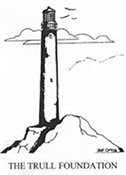 |
 |







